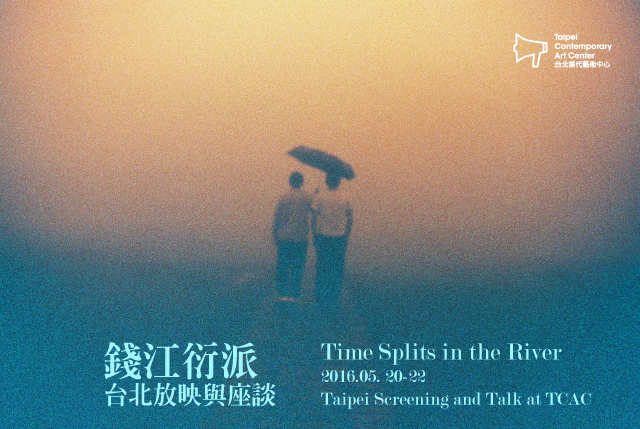For English, please scroll down.
放映場次時間表:
2016.05.20(五)3pm, 5pm, 7pm
2016.05.21(六)1pm, 5pm, 7pm
2016.05.22(日)1pm
座談時間:2016.05.22(日),下午3點
地點:台北當代藝術中心,台北市保安街49巷11號(捷運大橋頭站)
觀影門票:新台幣100元。收入全數作為支持本計畫藝術家之製作費用。
每場限定觀眾15人,當日現場購票,售完為止。恕無提供預售服務。
三一八運動之後,家庭為何會成為思考公共問題的政治場域?
《錢江衍派》的四名創作者在參與運動期間,感受到和家人之間的認知差距,這層隔閡往往出現在許多社運參與者乃至藝術工作者身上。在這樣的情況下,家庭關係非但不是避風港,反而是一套自我壓抑的機制:相忍為安的慣性總是牽制住各種家庭裡的「異見」表達。藝術如何在其中建立對話的空間並讓真實的想法得以被述說,則成為這項計畫試圖面對的政治性問題。然而,這並不是為了尋求和解(如同許多家庭電影一般),而是要讓政治問題變成家庭問題,也讓家庭問題變成政治問題。
四名藝術家試圖透過這部和家人合作的電影拋出上述的問題,也期待透過影像的放映和座談中的對話,一同思考這團穿越世代、懸而未決的文化叢結。
關於電影:
錢江衍派(2016),台灣。89分鐘/中英字幕
預告片:https://www.youtube.com/watch?v=c8NxFxNT0HE
「錢江衍派」是一項由四名藝術家與四個家庭共同合作的電影計畫,這項計畫的發想源自於參與社會運動的經驗。四名藝術家在參與太陽花運動的過程中發現,家人雖然都肯定近代民主政治的發展,卻對於當今的社會運動有著諸多疑慮 ; 此外,即便父母成長於社運蓬勃發展的80年代,當年卻也都不曾親身參與其中。四名藝術家決定透過「拍電影」來和家人一同追溯這段過往,並藉此溝通彼此不同的想法,他們將監獄文學作家施明正的小說和生命經驗改編為劇本,而家人們則在片中飾演戒嚴時期的異議份子 ; 然而,家人們卻在電影的拍攝過程中漸漸地進入了自己的回憶,成了各自生命故事的回顧與反思,最後的電影則呈現了這段家人之間互動的過程。
這項計畫將電影作為翻轉現實關係的溝通平台,藉此在家庭內打開過往被閉鎖的話語。一方面,嘗試在「少數經驗」的重演中,重啟社會多數人與異己間的協商 ; 另一方面,則面對了家庭內部溝通的不可能性。電影的片名「錢江衍派」則是施氏的家族堂號,而台灣各地的古厝,時常可以在正屋上方看見「○○衍派」四字,標誌著家族姓氏的淵源和血緣的流傳。在這項與家人合作的電影計畫中,劇本是發想自施明正的故事,而作為電影片廠的施氏古厝則是其中一名藝術家的祖厝,祖厝正屋門楣上的匾額正寫著「錢江衍派」四字,本計畫便以此為名。
關於藝術家:
廖烜榛、黃奕捷、李佳泓、王又平。
四人為大學同儕,1992-3年生,2015年畢業於台北藝術大學美術系,曾數度發起與家人合作的創作計畫,試著從中發展出更具溝通性的創作方法。
Screening schedule:
2016.05.20 (Fri) 3pm, 5pm, 7pm
2016.05.21 (Sat) 1pm, 5pm, 7pm
2016.05.22 (Sun) 1pm
Talk: 2016.05.22 (Sun), 3pm
Venue: Taipei Contemporary Art Center, No. 11, Lane 49, Baoan Street, Taipei (MRT Daqiaotou Station)
Film ticket: TWD 100 per person
All ticket income will go to the artists directly to support this project’s production cost.
Each screening opens for 15 audiences only. Tickets can be purchased at TCAC on the screening date. No reservation.
The project asks why family has become a site of politics to interrogate public issues after the March 18 Student Movement.
Four artists came to recognize the emerging perception gap between them and their family members during their participation in the March 18 movement could be quite a common experience among many activists and artists as well. Instead of providing a shelter, family relations become an institution for self-repression, and dissensus-like expressions are often hold up by considerations for peace. The project Time Splits in the River attempts to address such political question by employing art to create a space for conversations to narrate more real ideas and emotions. However, it is not about seeking reconciliation (as many family movies), but to transform political questions into family questions and vice versa.
These questions proposed in the film that artists produced in collaboration with their family members will invite conversations from audience to reflect on this suspended cross-generation cultural phenomenon through the screening and the talk.
About the film:
Time Splits in the River (2016), Taiwan. 89 mins, Chinese and English subtitles
Trailer: https://www.youtube.com/watch?v=c8NxFxNT0HE
Derived from the experience of participating in the March 18 Student Movement in 2014, Time Splits in the River is a collective film project initiated by four artists to collaborate with their own families. These artists realize their families have many questions and hesitations toward the recent social movement despite of their recognition to the democracy progress in the recent political history in Taiwan. Their family members did not participate in any social movements in the 80s when they were young, albeit that was a high time for the local social movement development. Four artists decided to trace such personal history through making a film together with their families in order to communicate their ideas. They adapted the fictions and life experience of writer Shi Ming-Zheng in their script, and invited their families to star as the dissidents during the Martial Law period. During the process of filmmaking, their family members gradually recollected their personal stories, and the film also captured the process of four families’ interactions.
The project employs film as a communication platform to mobilize relations in reality and to open the dialogues in family situations. Through re-enacting the social minority’s experiences, the film shade light on new negotiations between the social majority and other dissidents, while exposing the impossibility of family communication. The film’s Chinese title Qiangjiang Family Branch refers to the ancestry origin of Shi family. We can often see banners of “Family Branch” on the façade of Taiwanese traditional residencies, indicating the particular origins of the family blood and family name. In this project, the script is transcribed from Shi Ming-Zheng’s story, and the traditional house with the banner “Qiangjiang Family Branch” in the actual filming site belongs to one of the artists’ family. The project is named to describe these two kinds of family encounter in Chinese, and the English title takes a more metaphoric approach to capture the complex affections.
About artists:
Liao Xuan-Zhen, Huang I-Chieh, Lee Chia-Hung and Wang Yo-Ping.
Graduated from Taipei National University of Arts in 2015, the collective of four artists initiates several art projects in collaboration with their families in the attempt to develop creative communications from the process of art production.

